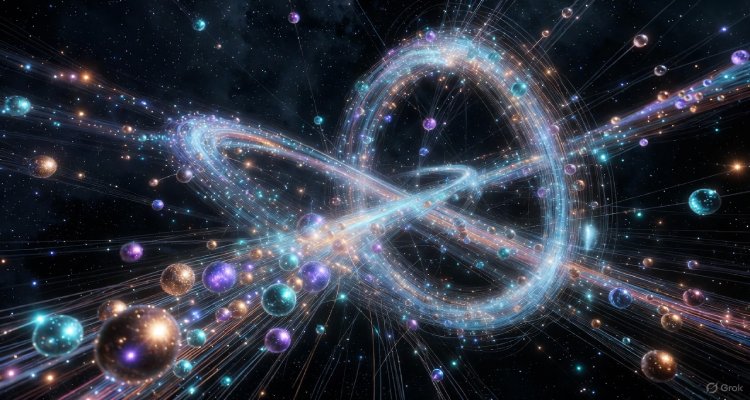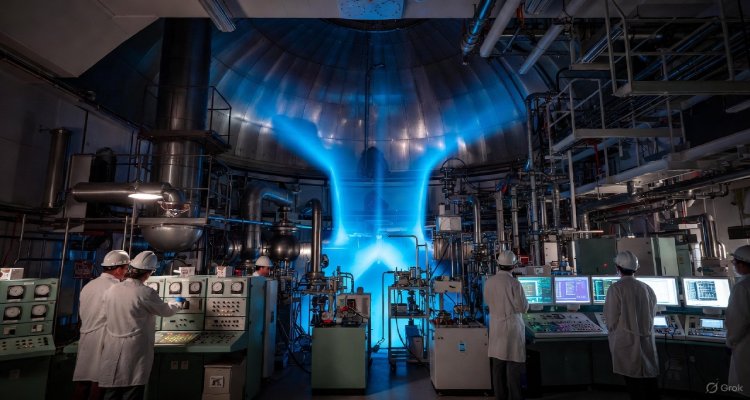How the James Webb Telescope is Transforming Our View of the Universe
NASA’s James Webb Space Telescope is revolutionizing space exploration, offering unprecedented insights into the early universe, exoplanets, and galactic formation.
Introduction: A New Eye on the Cosmos
In July 2022, the James Webb Space Telescope (JWST) delivered its first images—and with them, a paradigm shift in our understanding of the universe. With its golden mirrors and infrared vision, Webb began peering deeper into space and further back in time than any instrument before it. No longer just a telescope, Webb is now humanity’s most powerful tool for unraveling cosmic mysteries—from the birth of stars to the atmospheric makeup of distant worlds.
Context & Background: From Hubble to Webb
Before Webb, the Hubble Space Telescope reigned as the pioneer of deep-space imaging for over three decades. While Hubble gave us awe-inspiring views of galaxies, nebulae, and black holes, it operated primarily in the visible and ultraviolet spectrum. Infrared light—essential for observing the early universe obscured by cosmic dust—remained largely out of reach.
Enter the James Webb Space Telescope, a $10 billion international collaboration between NASA, the European Space Agency (ESA), and the Canadian Space Agency (CSA). Launched on December 25, 2021, Webb orbits 1.5 million kilometers from Earth at the second Lagrange point (L2), far beyond the reach of maintenance missions. Designed to observe the universe in infrared, Webb can detect light from galaxies formed over 13 billion years ago—just a few hundred million years after the Big Bang.
Main Developments: What Webb Has Uncovered So Far
Since going operational, JWST has already delivered groundbreaking findings:
1. Seeing the First Galaxies
Webb’s ultra-deep field images revealed galaxies that existed just 300–400 million years after the Big Bang. One such galaxy, CEERS-93316, may be the earliest and most distant ever observed, potentially rewriting the timeline of galaxy formation.
2. Characterizing Exoplanets
Using its Near Infrared Spectrograph (NIRSpec), Webb analyzed the atmosphere of exoplanet WASP-96b, detecting water vapor, clouds, and haze. This milestone proves JWST’s potential in identifying habitable planets—or even signs of alien life.
3. Stunning Stellar Nurseries
Images of the Carina Nebula and the Pillars of Creation showed protostars hidden in clouds of gas and dust. Webb’s resolution and infrared capabilities are helping astronomers witness star formation in real time, deepening our understanding of stellar life cycles.
4. Black Holes and Cosmic Structure
Webb has observed massive black holes in young galaxies, challenging existing models of galactic evolution. Its imaging has also helped map dark matter and the structure of the cosmic web, offering a clearer picture of how the universe is organized.
Expert Insight: “A Golden Era for Astronomy”
Dr. Jane Rigby, NASA’s Senior Project Scientist for JWST, called Webb’s early results “transformational.”
“We are rewriting textbooks. Every image, every spectrum is showing us something new—and many times, something we never predicted,” she said.
Meanwhile, astronomer Dr. John Mather, senior astrophysicist at NASA Goddard, added:
“Webb was designed to answer the biggest questions: How did the first galaxies form? Are we alone? It’s already exceeding expectations.”
Public reaction has also been overwhelming. Social media buzzed with Webb’s first full-color images, while educators and museums have reported a surge in space interest among students.
Impact & Implications: The Future of Space Science
Webb’s discoveries are not just scientific milestones—they are shaping the future of astrophysics, planetary science, and even philosophy.
- Rewriting Cosmic History: Webb is forcing scientists to reconsider when and how the first galaxies formed.
- Search for Life: With future surveys of rocky exoplanets like TRAPPIST-1e, JWST could detect biosignatures—chemical hints of life.
- Guiding Future Missions: Webb’s data is informing the design of next-gen missions like the Nancy Grace Roman Space Telescope and ESA’s ARIEL, both focused on dark energy and exoplanet atmospheres.
Back on Earth, JWST is inspiring a new generation of scientists and storytellers alike. Its ability to spark curiosity may prove just as powerful as its science.
Conclusion: A Telescope for the Ages
The James Webb Space Telescope is not merely a successor to Hubble—it is a leap into a new era of cosmic discovery. From revealing the universe’s infancy to probing the atmospheres of alien worlds, Webb is transforming both astronomy and humanity’s place within the cosmos. As it continues to peer deeper into the night sky, one thing is certain: the universe looks different now—and so do we.
Disclaimer: This article is based on current publicly available data from NASA and peer-reviewed scientific publications as of August 2025. Future observations may update or revise findings described herein.











